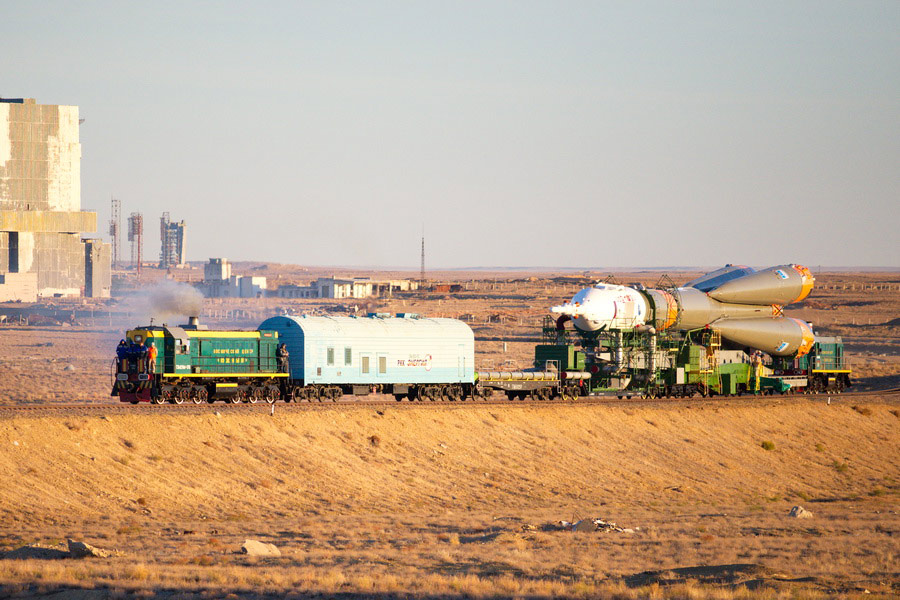
A rocket launch is a breathtaking and unforgettable spectacle. But what does the journey to the launch pad look like? The final leg of this voyage, before its journey into space, involves the rocket being transported from the Assembly and Testing Building (ATB) at the Baikonur Cosmodrome, to its delivery and vertical positioning on the launch pad.
Rocket components are manufactured in Samara or Moscow, traveling over a thousand kilometers by rail before reaching the Baikonur Cosmodrome. Here, they undergo their final assembly: in the expansive ATB, engines of various stages are interconnected, fuel tanks are attached, and a payload, which might include a spacecraft or satellites, is installed in the upper part. Following assembly, various tests are performed and the rocket is prepared for transport to the launch pad.
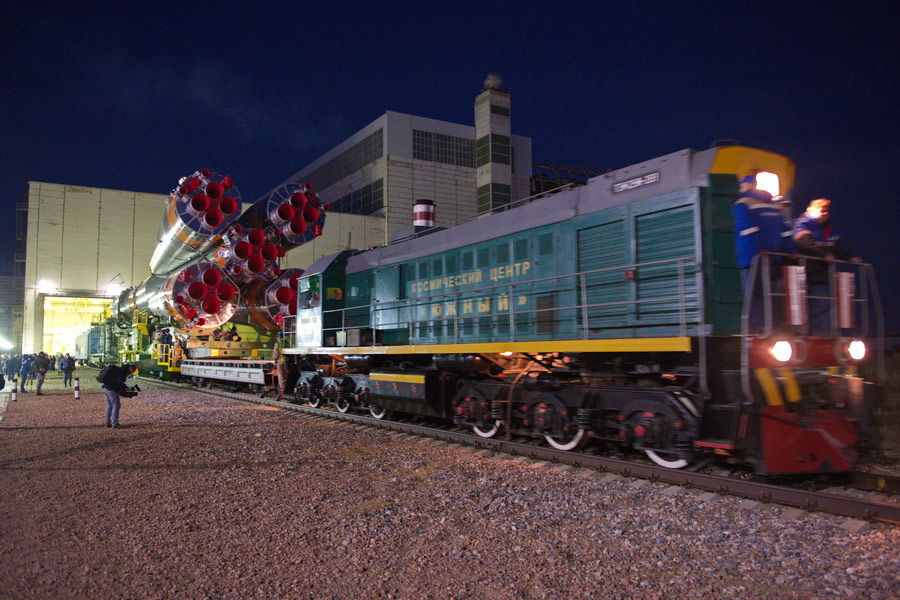
Two days prior to liftoff, precisely at 7:00 a.m., the colossal gates of the ATB open and the extraction of the rocket commences. The early morning departure is a long-standing tradition, upheld even under inclement weather conditions. The towering Soyuz rocket, measuring about 50 meters in length and weighing more than 33 tons, makes its way at a speed of 5 kilometers per hour.
A potent shunting locomotive is deployed for transportation, while the rocket itself lies on a special platform equipped with hydraulic jacks, which later position it on the launch pad. Military personnel escort the train throughout its journey, and rocket scientists and mission leaders walk ahead of the locomotive, waving off their creation as it embarks on its flight. Accompanying them is an officer donned in a brightly colored vest and holding flags, acting as a guide for the locomotive driver due to the difficulty in adhering to the set speed using the onboard instruments.
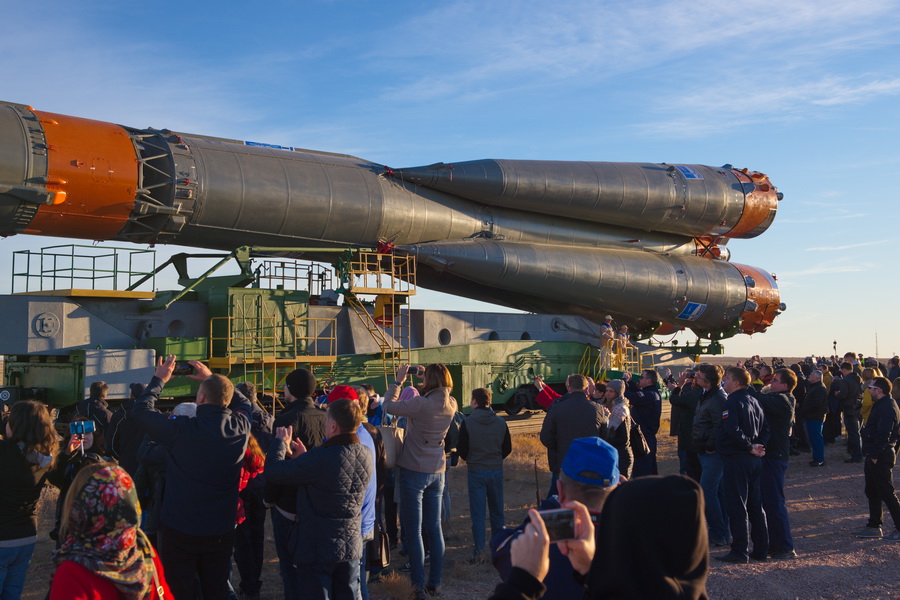
Visitors at the Baikonur Cosmodrome can witness the beginning of the rocket's removal from the ATB, a portion of its journey to the railroad crossing located 1.5 km from the launch pad, and at the site itself when the rocket begins to ascend into its upright position. To do this, you'd need to depart from your hotel in Baikonur around 6 am. It's worth noting that the cosmodrome is nestled in the Kazakh steppe, so depending on the season, it's advised to bring sunglasses, hats, and drinking water during the summer, or to dress warmly during the winter to shield against the biting steppe winds.
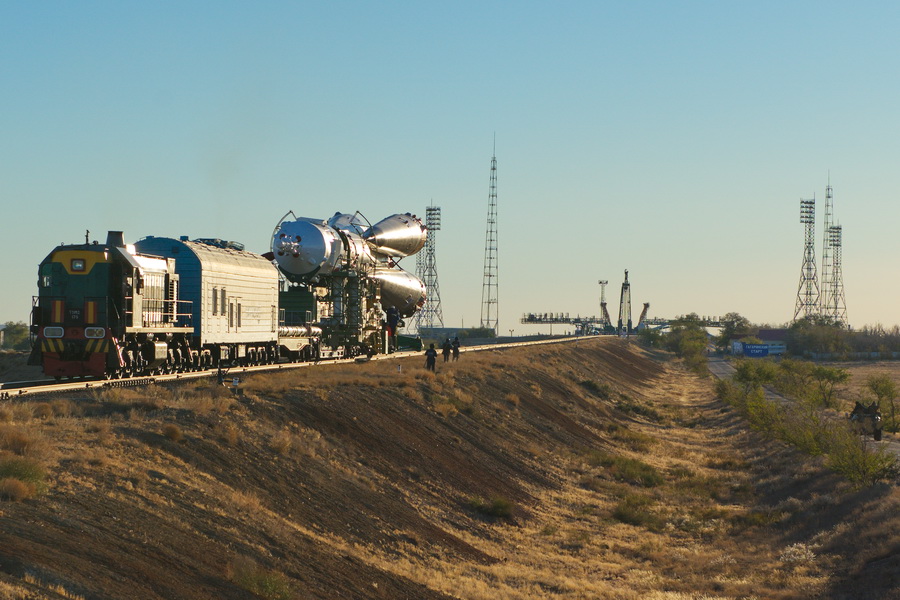
Roughly ninety minutes or more after departing the Assembly and Testing Building, the rocket arrives at the launch pad. Here, the locomotive is disconnected, and using special electric motors, the mechanism carefully maneuvers the last few meters and even centimeters. Once the platform is perfectly positioned, the process of verticalizing the rocket begins. Enormous, robust hydraulic jacks slowly start to raise the rocket. This process is even slower than its removal from the assembly hall and can take up to half an hour—it's akin to watching the minute hand on a clock, only twice as slow.
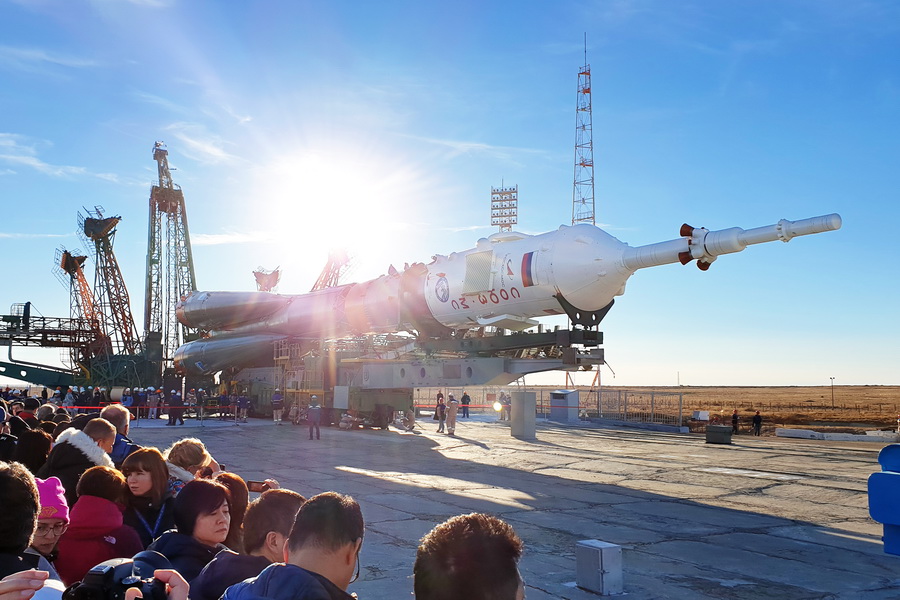
Upon the rocket achieving a vertical position, specialists ascend all the levels and supports of the launch pad to meticulously inspect and reinspect all fastenings, look for any possible defects, and so on. The entire removal and installation process, which commences at 7 a.m., typically concludes by noon. Following this, the rocket will stand idle for a full day before launch, during which it will be subject to several more checks and refueling procedures. Very soon, after traversing all its earthly paths, the rocket will embark on its journey into the great beyond!

